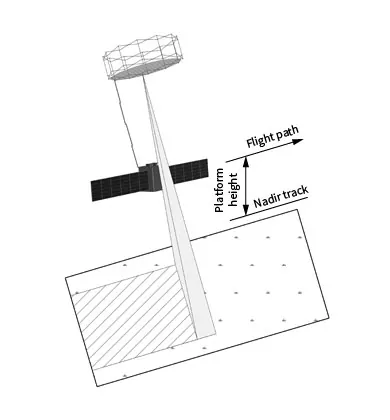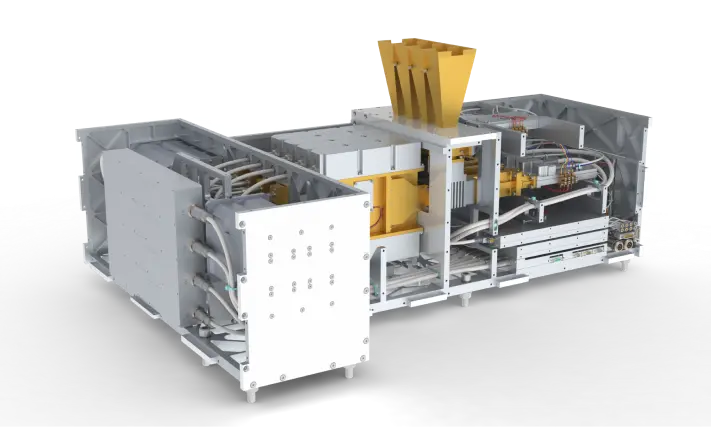
SAR Technology
Principles

Current status - TRL 6
EOS SAR has successfully captured high-resolution ISAR images in both stripmap & spotlight modes of the International Space Station using an in-house developed X-band SAR radar. At the moment, the multibeam SAR system is at TRL 6.
Features
EOS SAR satellites will operate in Stripmap, Spotlight, and ScanSAR modes that will support wide range of applications. Interferometric operation is also supported.
The satellites are designed to achieve high operational efficiency and allow for rapid deployment of single and dual-band SAR constellations. Dual-band operation ( X- and S-band) increases versatility for all weather conditions and improves object-ground contrast. Special configuration of the radar front end allows for imaging of selected areas in both bands in a single orbit.
EOS is building a SAR satellite payload suitable for constellations enabling high revisit rates.
A constellation of 12 satellites will enable 2–3 hours revisit time for a given area.
Formation flying with optical satellites is under development for more efficient utilization of satellite resources. In addition, the combination of SAR and optical images enriches the informational content of satellite products.
Modes of operation
-

Stripmap
Main imaging mode, provides good resolution and large coverage
-

Spotlight
Provides best resolution for selected area
-

Interferometry
Enables recording time-series data, change detection, ground subsidence, etc.
SAR payload

Technical characteristics
- multibeam operation enabling wide swath
- high resolution (as low as 25 cm)
- single or dual-band operation (X- and/or S-bands)
- Linear (X-band), Quad-pol (S-band)
- 50 kg SAR payload weight
- Stripmap, Spotlight and ScanSAR modes
Dual band performance

X- and S-band
- dual band operation allows for any weather imaging
- diversifies image acquisition
- provides better image contrast
X-Band
- high resolution imaging
- target identification
- object classification
- DEM and topography
S-Band
- higher penetration capabilities (foliage, ground)
- lower rain attenuation
- soil moisture and crop classification
- higher contrast for reflective objects
